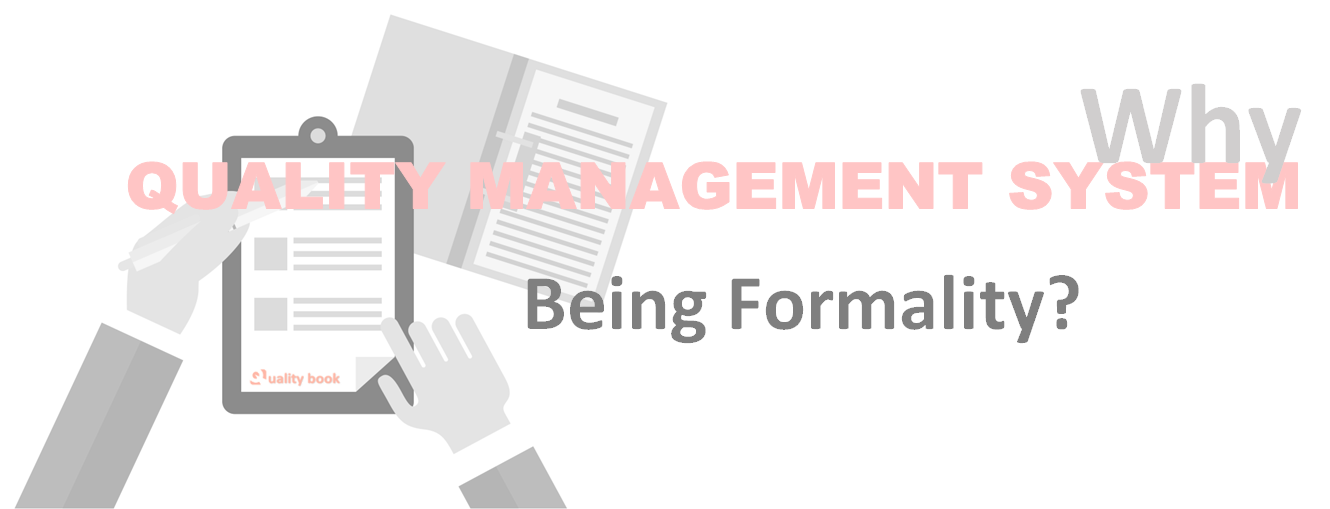Quality Management is being formality when any organization lacks commitments and core values of Quality management system.

Foresight is a vision of the future that determines what a business will become, identifying potential opportunities, and proposing goals that realistically reflect the benefits to be gained in the future. Foresight provides the sequence of organizational structures and systems needed to implement the plan of where the business is headed. How the business develops an action plan, and how the business needs to implement the plan.
Lack of foresight leads to the exclusion of quality from strategy. In this way, the goals and priorities of the enterprise are not clear, and the role of quality in the enterprise is not easy to understand. To succeed from their efforts, companies need to shift their mindset and create an environment for continuous quality improvement.
Not customer-centric
Misunderstanding customer wishes and lack of awareness of serving customers ahead of time, although some work is improved but does not add value to customers, will also lead to the failure of quality management.
For example, delivery companies focused only on on-time delivery and struggled to increase punctuality from 42% to 92%. To the manager’s surprise, however, the company lost the market because it emphasized punctuality, but did not have time to answer customer calls and explain products.
Customer satisfaction is a dynamic and constantly changing goal, and success in quality management requires a focus on understanding customer expectations and developing projects that meet or exceed customer needs.
Managers don’t contribute enough.
Surveys show that the failure of most quality management activities is not technical but management. All quality management authorities agree that one of the biggest obstacles to quality management is the lack of contributions from upper management in quality improvement.
The contribution of managers means communicating the company’s ideas from top to bottom through actions. Focusing all employees and all activities on continuous improvement, which is a practical approach. In one survey, 70 percent of production executives admitted that their companies are now spending more time on improving customer satisfaction factors. Yet they delegate these responsibilities to middle managers. And it is unclear whether these efforts are successful or not. Imagine how successful such quality management can be.
Training has no goals.
A lot of money is spent on quality management training, but many companies do not get fundamental improvements as a result. Because too much quality management training is irrelevant. It can be said that training without goals and focus is actually a waste, which is also a factor in the failure of quality management.
Lack of quality cost analysis
Many enterprises do not calculate either the cost of quality or the benefits of improvement projects, and even those that calculate the cost of quality often calculate only the obvious costs (such as guarantees) and the easily calculable costs (such as training fees), completely ignoring the main costs involved, such as lost sales and the intangible costs of customer departure. Some companies do not calculate the potential benefits of quality improvement.
The organizational structure is inappropriate.
Organizational structure, measurement and remuneration go unnoticed in quality management training and publicity. In some companies, the role of managers is very unclear, and responsibility for quality management is often delegated to middle managers. Which leads to power struggles between quality groups, which lack an overall grasp of quality, resulting in controversy and confusion. Flat structure, decentralized, cross-departmental work is necessary for the success of quality management. Successful companies maintain an open form of communication, develop communication throughout the process, and eliminate barriers between departments. Studies have shown that decentralized, cross-sectoral groups can achieve between 200 and 600 per cent of the results achieved by intersectoral groups.
Quality managers become bureaucrats.
In the process of quality management activities, quality management is usually delegated to a privileged person of quality. Quality becomes a parallel process, giving rise to new bureaucratic hierarchies and structures with their own rules, standards, and reporting staff, and irrelevant quality reporting becomes normal.
This privileged figure of quality gradually increased and infiltrated into a behemoth with huge costs and no results. Quality bureaucrats isolate themselves from everyday life, do not understand the real situation, and become obstacles to quality improvement.
Missing and incorrect metrics
Missing and incorrect metrics are another cause of quality management failures. Improper measurement encourages short-term behavior and loses long-term performance, with improvements in one department at the expense of another. For example, choosing the right price improves the performance of the purchasing department. But creates significant quality problems for the production department.
Remuneration and recognition are inadequate.
Strategic objectives, performance measures, and remuneration or recognition are the three pillars that support quality improvement in the enterprise. Changing attitudes and patterns requires significant behavioral change, which is heavily influenced by recognition and remuneration systems.
How companies recognize and reward employees is a major part of communicating the company’s strategic intent. In order for QMS efforts to be effective, companies should recognize and reward good performers. So that quality improvement becomes a reality.
The accounting system is not perfect.
The current accounting system bears a great deal of responsibility for the failure of QMS. It distorts the cost of quality without understanding its potential impact. For example, costs associated with defective products. Such as warranties, are not even considered quality costs; Disposal, rework, etc., are considered as general management expenses of the enterprise.